
The Enchanting Charm of San Carlos de Bariloche
Discover the alpine allure of San Carlos de Bariloche, where stunning landscapes, outdoor adventures, and a rich culinary scene await in the heart of Argentina’s Lake District.
Welcome to San Carlos de Bariloche, a picturesque neighbourhood nestled in the heart of Argentina’s Lake District. Known for its stunning natural beauty, this charming town is surrounded by the majestic Andes Mountains and the crystal-clear waters of Lake Nahuel Huapi. A blend of Swiss alpine architecture and Argentine culture, Bariloche is often referred to as the 'Switzerland of South America.' Stroll through the quaint streets lined with chocolate shops, artisanal craft stores, and cozy cafes. The town’s main square, the Centro Cívico, is a hub of activity and a great place to start your exploration. The stone buildings and wooden structures add to the alpine ambiance, making it a unique and memorable destination. Outdoor enthusiasts will find an array of activities to enjoy, from hiking and mountain biking in the summer to skiing and snowboarding in the winter. The nearby Nahuel Huapi National Park offers breathtaking landscapes and diverse wildlife, perfect for nature lovers and adventure seekers. Don’t miss the opportunity to take a scenic drive along the famous Route of the Seven Lakes, where you’ll encounter some of the most stunning vistas in Patagonia. Bariloche is also renowned for its vibrant culinary scene. Indulge in local specialties such as smoked trout, Patagonian lamb, and an array of delectable chocolates. The town’s breweries offer a taste of the burgeoning craft beer scene, making it a delightful destination for food and drink aficionados.
Local tips in San Carlos de Bariloche
- Visit during the shoulder seasons of spring and fall to avoid the crowds and enjoy milder weather.
- Rent a car to explore the surrounding lakes and national parks at your own pace.
- Try the local chocolates; Mamuschka and Rapanui are two must-visit chocolate shops.
- Book your accommodation in advance during the winter ski season and summer months.
- Take a boat tour on Lake Nahuel Huapi for a different perspective of the stunning scenery.
The Enchanting Charm of San Carlos de Bariloche
Welcome to San Carlos de Bariloche, a picturesque neighbourhood nestled in the heart of Argentina’s Lake District. Known for its stunning natural beauty, this charming town is surrounded by the majestic Andes Mountains and the crystal-clear waters of Lake Nahuel Huapi. A blend of Swiss alpine architecture and Argentine culture, Bariloche is often referred to as the 'Switzerland of South America.' Stroll through the quaint streets lined with chocolate shops, artisanal craft stores, and cozy cafes. The town’s main square, the Centro Cívico, is a hub of activity and a great place to start your exploration. The stone buildings and wooden structures add to the alpine ambiance, making it a unique and memorable destination. Outdoor enthusiasts will find an array of activities to enjoy, from hiking and mountain biking in the summer to skiing and snowboarding in the winter. The nearby Nahuel Huapi National Park offers breathtaking landscapes and diverse wildlife, perfect for nature lovers and adventure seekers. Don’t miss the opportunity to take a scenic drive along the famous Route of the Seven Lakes, where you’ll encounter some of the most stunning vistas in Patagonia. Bariloche is also renowned for its vibrant culinary scene. Indulge in local specialties such as smoked trout, Patagonian lamb, and an array of delectable chocolates. The town’s breweries offer a taste of the burgeoning craft beer scene, making it a delightful destination for food and drink aficionados.
Iconic landmarks you can’t miss
Teleférico Cerro Otto
Discover stunning panoramas from the Teleférico Cerro Otto, a premier mountain cable car attraction in Bariloche, Argentina.

Centro Cívico Bariloche
Explore the vibrant heart of San Carlos de Bariloche at Centro Cívico, a stunning blend of culture, history, and breathtaking landscapes.

Piedras Blancas
Explore the snowy paradise of Piedras Blancas in Bariloche, where adventure meets breathtaking landscapes in the heart of Argentina's winter wonderland.

Cathedral Our Lady of Nahuel Huapi
Discover the enchanting Cathedral Our Lady of Nahuel Huapi, a striking Gothic architectural gem in Bariloche, surrounded by natural beauty and rich culture.

Museo del Chocolate Havanna
Discover the enchanting world of chocolate at Museo del Chocolate Havanna in San Carlos de Bariloche, where every bite tells a delicious story.

Plaza Catedral
Discover the charm of Plaza Catedral in San Carlos de Bariloche, a vibrant park blending nature, culture, and stunning views in Argentina.

Piedra de Habsburgo
Explore the breathtaking Piedra de Habsburgo, a must-visit hiking area in San Carlos de Bariloche, offering stunning views and serene nature.

Noche Nordica
Discover the breathtaking beauty of Noche Nordica in Bariloche, where stunning landscapes and serene experiences await every traveler.

Monumento a Julio Argentino Roca
Explore the Monumento a Julio Argentino Roca in Bariloche, a captivating tribute to history amidst stunning natural beauty.
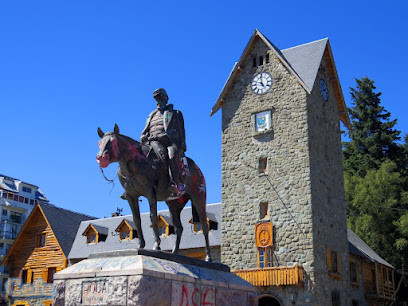
Cathedral
Discover the architectural beauty and serene ambiance of the Cathedral in San Carlos de Bariloche, a must-visit tourist attraction amidst stunning landscapes.

Unmissable attractions to see
Teleférico Cerro Otto
Experience breathtaking views and thrilling adventures at Teleférico Cerro Otto, the iconic cable car attraction in Bariloche.

Piedras Blancas
Experience the breathtaking views and thrilling activities at Piedras Blancas in Bariloche, Argentina - a must-visit tourist attraction for nature lovers.

Cathedral Our Lady of Nahuel Huapi
Explore the stunning Cathedral Our Lady of Nahuel Huapi, a neo-Gothic masterpiece in the heart of Bariloche, offering rich history and breathtaking architecture.

Museo del Chocolate Havanna
Discover the enchanting world of chocolate at Museo del Chocolate Havanna, a delightful museum in San Carlos de Bariloche filled with rich history and tasty experiences.

Plaza Catedral
Experience the beauty and cultural richness of Plaza Catedral in San Carlos de Bariloche, a tranquil escape in the heart of the Argentine Patagonia.
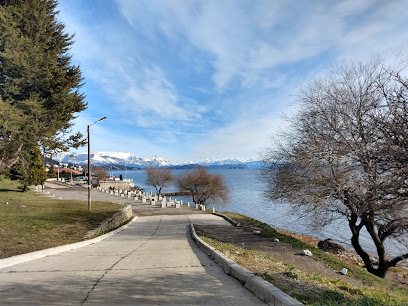
Francisco Moreno Museum of Patagonia
Explore the captivating history and culture of Patagonia at the Francisco Moreno Museum in scenic San Carlos de Bariloche.
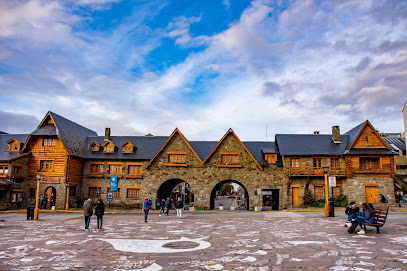
Cerro Viejo
Explore Cerro Viejo, a thrilling theme park in the heart of Bariloche, offering breathtaking views, exciting rides, and unforgettable family adventures.

Mirador Lago Nahuel Huapi
Experience the stunning beauty of Mirador Lago Nahuel Huapi, offering breathtaking views of Nahuel Huapi Lake and the Andes Mountains.

Totems del Nahuel Huapi
Discover the cultural and natural beauty of Totems del Nahuel Huapi in San Carlos de Bariloche, where art meets the breathtaking landscapes of Patagonia.

La Ventana
Explore Cerro Ventana in San Carlos de Bariloche for breathtaking views, stunning hikes, and a unique connection with nature in Argentina's beautiful Andes.

Essential places to dine
Familia Weiss
Experience exquisite Argentine cuisine at Familia Weiss in San Carlos de Bariloche, where every meal is a celebration of local flavors.

Friends
Experience the best of American grill and pizza cuisine at Friends in San Carlos de Bariloche, where flavor meets tradition.

El Boliche de Alberto Pastas
Experience authentic Argentinian pasta dishes in the heart of San Carlos de Bariloche at El Boliche de Alberto Pastas.

La Alpina Restaurante
Experience authentic Patagonian cuisine at La Alpina Restaurante in San Carlos de Bariloche - where local flavors meet warm hospitality.

La Marmite
Experience exquisite dining at La Marmite in San Carlos de Bariloche—where local flavors meet culinary excellence amidst stunning Patagonian scenery.
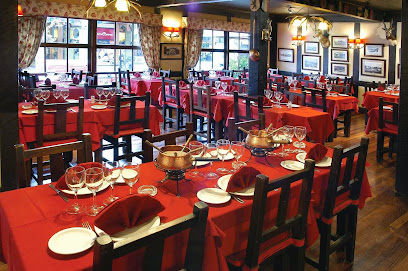
Alto El Fuego - Centro
Experience authentic Argentinian cuisine at Alto El Fuego - where every steak tells a story.

El Boliche de Alberto
Experience authentic Argentine cuisine at El Boliche de Alberto in San Carlos de Bariloche - a culinary treasure showcasing the flavors of Patagonia.

La Jirafa
Experience authentic Argentine cuisine at La Jirafa in San Carlos de Bariloche – where every meal is a celebration of local flavors.

La Casita Restaurante Bariloche
Savor the rich flavors of Argentina at La Casita Restaurante Bariloche - where every meal is a celebration of local tradition.
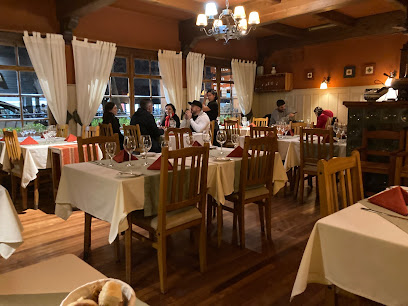
Restaurant Lingüini
Discover the rich flavors of Italy at Restaurant Lingüini in San Carlos de Bariloche – a culinary haven for every traveler.

Stag
Discover Stag: A premier Argentinian restaurant offering exquisite dishes and stunning views of Lake Nahuel Huapi in Bariloche.
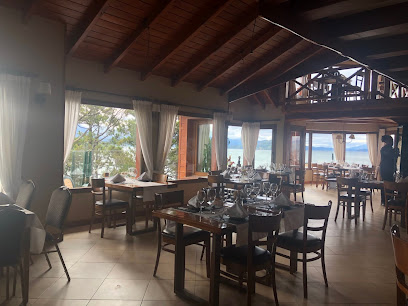
Chez Philippe
Experience authentic French cuisine at Chez Philippe in San Carlos de Bariloche - where every dish tells a story.

Markets, malls and hidden boutiques
Galeria del sol bariloche
Explore Galeria del Sol in Bariloche: A premier shopping destination for local crafts and high-end souvenirs amidst stunning scenery.

Colectivo de Diseño
Explore the heart of Patagonia's art scene at Colectivo de Diseño, where every handmade item tells a story of local craftsmanship.

Morena Llao Llao
Explore Morena Llao Llao - a Patagonia clothing store where local craftsmanship meets style, nestled in the stunning landscapes of Bariloche.

SUMMIT = Patagonia & Rab & Timberland & Burton & Volcom & Rip Curl & Oneill & Trown & Opiparo & Lado B
Explore the best outdoor clothing and gear at Summit in San Carlos de Bariloche, featuring top brands like Patagonia, Timberland, and Volcom.

El Bosque
Discover the heart of Patagonia at El Bosque, a gift shop offering unique artisan crafts and souvenirs in the stunning Bariloche.

Coiron
Discover the essence of Argentine culture at Coiron, a gift shop in San Carlos de Bariloche offering unique, handcrafted treasures.

La boutique
Explore La Boutique in Bariloche for unique Western apparel, blending fashion with the enchanting landscapes of Patagonia.

Pehuen
Discover the essence of Patagonia with handcrafted souvenirs at Pehuen, a delightful gift shop in San Carlos de Bariloche.
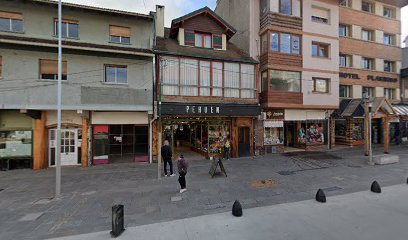
Shopping Onelli
Explore Shopping Onelli in Bariloche for unique home goods and local craftsmanship, perfect for souvenirs or enhancing your home decor.

SALE SHOP BARILOCHE
Explore Sale Shop Bariloche for unique home goods and gifts that capture the essence of Argentine culture and craftsmanship.

Essential bars & hidden hideouts
Wesley Brewery
Discover the vibrant atmosphere and exquisite craft beers at Wesley Brewery in Bariloche, a must-visit brewpub for every traveler.

Konna Bar
Discover the craft beer paradise at Konna Bar, the premier brewpub in the scenic San Carlos de Bariloche, offering local flavors and a vibrant atmosphere.

La Juana Bar Bariloche
Discover the vibrant nightlife of Bariloche at La Juana Bar, where local drinks and live music create unforgettable memories.

KUTRAL
Experience the vibrant nightlife at Kutral Bar in San Carlos de Bariloche, where local culture meets exquisite drinks in a lively atmosphere.

Luna Bar
Experience the vibrant nightlife of Bariloche at Luna Bar, where exquisite cocktails meet stunning views in a cozy atmosphere.

Duham, beer & cocktails bar
Discover the vibrant brewpub scene of Bariloche at Duham, where craft beers and cocktails meet a lively atmosphere.

South Bar
Experience the vibrant nightlife of San Carlos de Bariloche at South Bar, where exceptional drinks and a lively atmosphere await you.

Bacanal Lake & Wine Bar
Discover Bacanal Lake & Wine Bar, a lakeside gem in Bariloche offering exquisite wines, innovative cocktails, and delightful tapas in a stunning setting.

The Wine Room
Discover The Wine Room in Bariloche, where fine Argentine wines meet breathtaking Patagonian views for an unforgettable experience.

Patagonia Wine Bar
Discover the local flavors and warm ambiance of Patagonia Wine Bar in the heart of San Carlos de Bariloche, a must-visit for wine lovers.

Local Phrases
-
- HelloHola
[oh-la] - GoodbyeChau
[chow] - YesSí
[see] - NoNo
[no] - Please/You're welcomePor favor
[por fah-vor] - Thank youGracias
[grah-see-as] - Excuse me/SorryPerdón
[pair-dohn] - How are you?¿Cómo estás?
[koh-moh es-tas] - Fine. And you?Bien. ¿Y tú?
[bee-en. ee too] - Do you speak English?¿Hablas inglés?
[ah-blas een-glays] - I don't understandNo entiendo
[no en-tee-en-doh]
- HelloHola
-
- I'd like to see the menu, pleaseMe gustaría ver el menú, por favor
[may goo-sta-ree-ah ver el meh-noo, por fah-vor] - I don't eat meatNo como carne
[no koh-moh kar-nay] - Cheers!Salud!
[sah-lood] - I would like to pay, pleaseMe gustaría pagar, por favor
[may goo-sta-ree-ah pah-gar, por fah-vor]
- I'd like to see the menu, pleaseMe gustaría ver el menú, por favor
-
- Help!¡Ayuda!
[ah-yoo-dah] - Go away!¡Vete!
[veh-teh] - Call the Police!¡Llama a la policía!
[yah-mah ah lah poh-lee-see-ah] - Call a doctor!¡Llama a un médico!
[yah-mah ah oon meh-dee-ko] - I'm lostEstoy perdido
[es-toy pair-dee-doh] - I'm illEstoy enfermo
[es-toy en-fehr-moh]
- Help!¡Ayuda!
-
- I'd like to buy...Me gustaría comprar...
[may goo-sta-ree-ah kom-prar] - I'm just lookingSolo estoy mirando
[soh-lo es-toy mee-ran-doh] - How much is it?¿Cuánto cuesta?
[kwan-to kway-sta] - That's too expensiveEsto es muy caro
[es-to es moo-ee kah-ro] - Can you lower the price?¿Puedes bajar el precio?
[pway-des bah-har el pree-syo]
- I'd like to buy...Me gustaría comprar...
-
- What time is it?¿Qué hora es?
[kay oh-rah es] - It's one o'clockEs la una
[es lah oo-nah] - Half past (10)Las diez y media
[las d'yays ee me-dee-ah] - MorningMañana
[mah-nyah-nah] - AfternoonTarde
[tar-day] - EveningNoche
[noh-chay] - YesterdayAyer
[ah-yair] - TodayHoy
[oy] - TomorrowMañana
[mah-nyah-nah] - 1Uno
[oo-noh] - 2Dos
[dohs] - 3Tres
[trays] - 4Cuatro
[kwah-troh] - 5Cinco
[seen-koh] - 6Seis
[says] - 7Siete
[syay-tay] - 8Ocho
[oh-choh] - 9Nueve
[nway-vay] - 10Diez
[dyays]
- What time is it?¿Qué hora es?
-
- Where's a/the...?¿Dónde está...?
[dohn-deh es-tah] - What's the address?¿Cuál es la dirección?
[kwal es lah dee-rek-see-ohn] - Can you show me (on the map)?¿Puedes mostrarme (en el mapa)?
[pway-des mohs-trar-meh (en el mah-pah)] - When's the next (bus)?¿Cuándo es el próximo (autobús)?
[kwan-doh es el proh-ksee-moh (ow-toh-boos)] - A ticket (to ....)Un boleto (a ...)
[oon boh-leh-toh (ah ...)]
- Where's a/the...?¿Dónde está...?
History of San Carlos de Bariloche
-
The area around San Carlos de Bariloche has been inhabited for thousands of years by indigenous groups, primarily the Mapuche people. Their rich culture and deep connection to the land are evident in local traditions, stories, and the preservation of natural sites, which continue to be of great significance today.
-
San Carlos de Bariloche was officially founded in 1902, although European settlers began arriving in the late 19th century. The influx of German and Swiss immigrants contributed to the architectural style of the town, resulting in the distinctive alpine aesthetic seen in many buildings today.
-
Bariloche's stunning landscapes, including the Nahuel Huapi National Park, catalyzed its development as a tourist destination in the early 20th century. The construction of the famous Hotel Llao Llao in the 1940s further established Bariloche as a premier location for winter sports and outdoor activities, shaping its identity as a tourist hub.
-
The cultural landscape of San Carlos de Bariloche reflects a blend of indigenous traditions and European influences. Annual events such as the National Chocolate Festival celebrate this fusion, highlighting local artisans, culinary traditions, and the region's famous chocolate production, which has become synonymous with Bariloche.
-
In recent decades, San Carlos de Bariloche has become a focal point for environmental consciousness in Argentina. The establishment of Nahuel Huapi National Park in 1934 marked a significant commitment to preserving the region's natural beauty and biodiversity, influencing local culture and tourism to prioritize sustainability.
San Carlos de Bariloche Essentials
-
San Carlos de Bariloche is well connected to other neighborhoods and the surrounding areas. The main access point is the San Carlos de Bariloche Airport (BRC), which is approximately 15 kilometers from the city center. From the airport, you can take a taxi or a shuttle service to reach your destination in San Carlos de Bariloche. If you are traveling from other neighborhoods within Bariloche, local buses are available, and taxis are plentiful for convenient travel.
-
San Carlos de Bariloche offers various transportation options. The local bus system is reliable and connects most neighborhoods, the city center, and tourist attractions. Taxis and ride-sharing services are also widely available. For those who prefer cycling, there are bike rental shops around the city, and dedicated bike lanes are present in certain areas. Walking is a pleasant way to explore the charming streets, especially near the lakeside.
-
San Carlos de Bariloche is generally safe for tourists, but it is advisable to exercise caution, especially in crowded areas. Areas around the bus station and some neighborhoods, like El Alto, may have a higher incidence of petty crime. Always keep your belongings secure and be aware of your surroundings, particularly at night. Avoid displaying valuables and be cautious when using ATMs.
-
In case of an emergency, dial 911 for police assistance or medical emergencies. The main hospital is Hospital Zonal Ramón Carrillo, which provides emergency services. It’s advisable to have travel insurance that covers emergencies. For minor health issues, local pharmacies are available throughout the city where you can purchase over-the-counter medications.
-
Fashion: Do dress comfortably and in layers due to varying weather conditions; Don’t wear overly formal attire unless dining at upscale restaurants. Religion: Do respect local customs, especially when visiting churches; Don’t take photos without permission in religious sites. Public Transport: Do give up your seat for elderly passengers; Don’t play loud music or engage in disruptive behavior. Greetings: Do greet with a friendly smile or handshake; Don’t interrupt conversations or be overly familiar with strangers. Eating & Drinking: Do try local specialties like chocolate and craft beer; Don’t waste food or be rude to waitstaff.
-
To experience San Carlos de Bariloche like a local, visit the bustling markets such as the Feria Artesanal for handmade crafts and local foods. Engage with the community by attending local events or festivals. Don’t miss trying the famous chocolate shops, and consider exploring lesser-known hiking trails around the lakes for stunning views and a quieter experience. Also, visit local breweries to sample regional craft beers and get to know the locals.
Nearby Cities to San Carlos de Bariloche
-
Things To Do in San Carlos de Bariloche
-
Things To Do in Puerto Varas
-
Things To Do in Osorno
-
Things To Do in Pucon
-
Things To Do in Valdivia
-
Things To Do in Temuco
-
Things To Do in Concepción
-
Things To Do in Curicó
-
Things To Do in San Rafael
-
Things To Do in Rancagua
-
Things To Do in Santiago
-
Things To Do in Valparaíso
-
Things To Do in Viña del Mar
-
Things To Do in Mendoza
-
Things To Do in El Calafate













